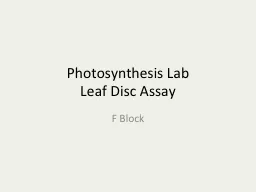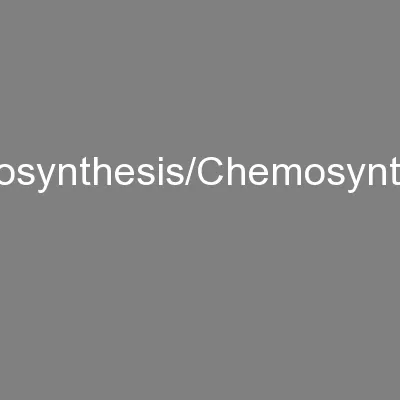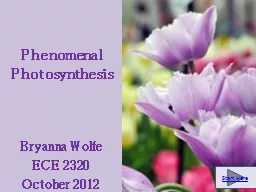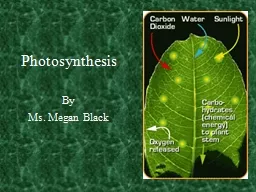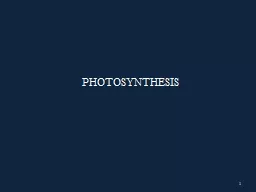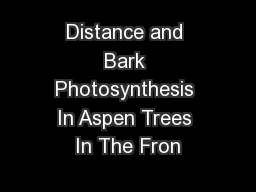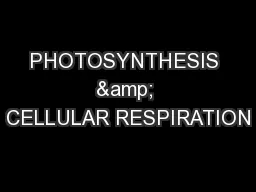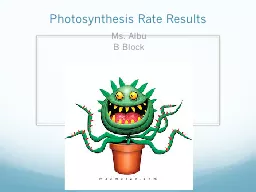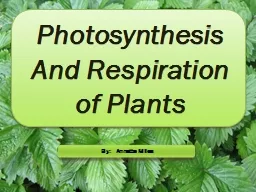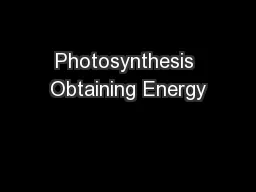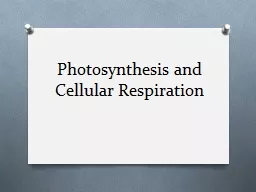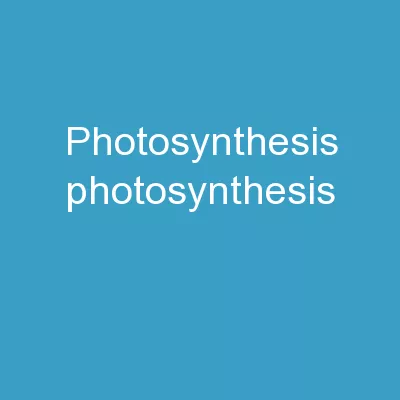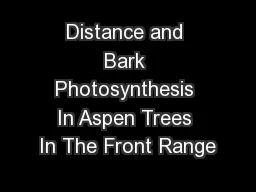PPT-Photosynthesis Lab
Author : calandra-battersby | Published Date : 2016-07-17
Leaf Disc Assay F Block Photosynthesis Lab An Educational Slide Created By Squade Andy Alex Colin Jordyn Summary of Findings In this lab the effects of plant
Presentation Embed Code
Download Presentation
Download Presentation The PPT/PDF document "Photosynthesis Lab" is the property of its rightful owner. Permission is granted to download and print the materials on this website for personal, non-commercial use only, and to display it on your personal computer provided you do not modify the materials and that you retain all copyright notices contained in the materials. By downloading content from our website, you accept the terms of this agreement.
Photosynthesis Lab: Transcript
Leaf Disc Assay F Block Photosynthesis Lab An Educational Slide Created By Squade Andy Alex Colin Jordyn Summary of Findings In this lab the effects of plant photosynthesis were investigated by comparing the rates of photosynthesis of two plants spinach and kale The rate of photosynthesis was measured the number of leaf cutouts on the surface per minute These floating leaf cutouts show that oxygen a product of photosynthesis is produced We found that the rate of photosynthesis for the spinach leaves was 86 cutouts per minutes 14 less than that of the kale leaves 10 cutouts per minute This difference could be a result the different amounts of light absorbing chlorophyll present in each leaf or a difference in vascular tissue sizes which may affect the plants ability to absorb water for photosynthesis. Lab. 5: Photosynthesis. Lab. 5: Photosynthesis. Leaves float in water due to presence of air (air spaces) in the leaf. . How does one get them to sink?. Lab. 5: Photosynthesis. Put leaf discs under vacuum . Autotrophs. :. Organisms that are capable of producing/creating their own food. Photoautotrophs. – sunlight drives the energy production process. Chemoautotrophs. – can extract energy from an inorganic substance. Bryanna Wolfe. ECE 2320. October 2012. Start Here. Objective:. . When you get hungry you might decide to raid the cookie jar or ask your mom to make you a sandwich. You do this because humans and animals get energy from the foods they eat. By . Ms. Megan Black. Photosynthesis. Photosynthesis is the process of making food by plants. The essential ingredients in making this food are sunlight, the chlorophyll that is present in green plants, water and carbon dioxide in the air. . 1. ENERGY AND LIFE. OBJECTIVES: 8.1. Explain where plants get the energy they need to produce food.. Describe the role of ATP (adenosine . triphosphate. ) in cellular activities.. 2. Energy is the ability to do work.. Lauren . Kendle. Winter Ecology. Spring 2012. Background Information. An analysis of 60 species indicated that there were photosynthetic processes in the . bark. Aspen Trees had the highest level of bark chlorophyll . Why Study Photosynthesis?. *All food webs start with photosynthesis!*. Photosynthesis is arguably the most important biological process on earth because of two key chemical reactions. Liberating oxygen:. ENERGY IN THE CELL. ENERGY IN THE CELL. ENERGY CONVERSIONS. PHOTOSYNTHESIS. CELLULAR RESPIRATION. ATP for cell usage. Is about. Starting with. Transformed by. Converted to. Plants & photosynthesis. Ms. . Albu. B Block. Photosynthesis Lab Findings. We tested the photosynthetic rate of leaf discs of spinach (control) to arugula (experimental) under a 100 watt lamp. Spinach had a higher rate of photosynthesis. And Respiration of Plants. By: Annette Miles. Photosynthesis is a process by which plants turn energy from the ____ into _______ or _______________. . sun. glucose. carbohydrates. First, _______________ strikes the leaf, passes into the leaf, and hits a ______________ inside an individual cell. . Photosynthesis. . converts light energy from the sun into chemical energy in the form of organic compounds through a series of reactions known as . biochemical pathways. . . Autotrophs. . use energy from sunlight or from chemical bonds in inorganic substances to make organic compounds. . Photosynthesis. Photosynthesis. is the process by which plants, some . bacteria use . the energy from sunlight to produce sugar and starches ……which . cellular respiration. converts into . ATP. Photosynthesis. - a process used by plants and other autotrophs to convert the light energy captured from the sun into chemical energy that can be used to fuel the organism’s activities. . *It is the way plants make food! . Lauren . Kendle. Winter Ecology. Spring 2012. Background Information. An analysis of 60 species indicated that there were photosynthetic processes in the . bark. Aspen Trees had the highest level of bark chlorophyll .
Download Document
Here is the link to download the presentation.
"Photosynthesis Lab"The content belongs to its owner. You may download and print it for personal use, without modification, and keep all copyright notices. By downloading, you agree to these terms.
Related Documents

